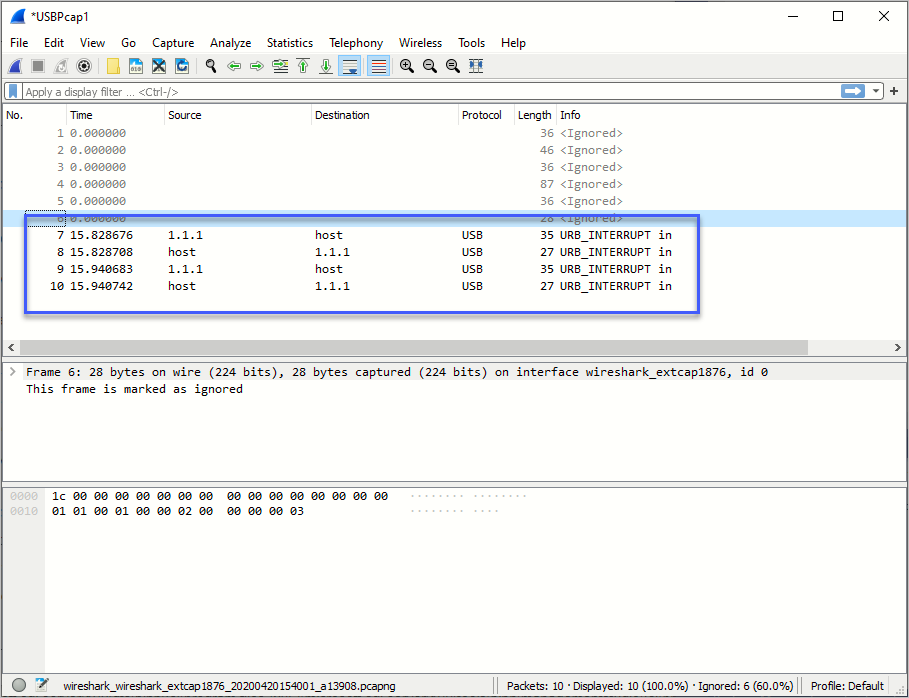

To give regular users privileges, make the usbmonX device(s) readable: If it is not loaded yet, run this command as root: To dump USB traffic on Linux, you need the usbmon kernel module.

The next two commands may need to be re-run after every reboot: Then ensure that non-superusers are allowed to capture packets in wireshark. To add yourself to the wireshark group, run the below command, then logout and login. (If there are other active USB devices, the raw USB traffic will include traffic to and from those devices, so it will obviously have higher volume than Ethernet traffic.) LinuxĬapturing USB traffic on Linux is possible since Wireshark 1.2.0, libpcap 1.0.0, and Linux 2.6.11, using the Linux usbmon interface.įirst, check if you belong to the wireshark group with: The USB bus will add additional overhead, so the raw USB traffic will have higher volume than the network traffic, even if the only active USB devices on the system are network adapters.


 0 kommentar(er)
0 kommentar(er)
